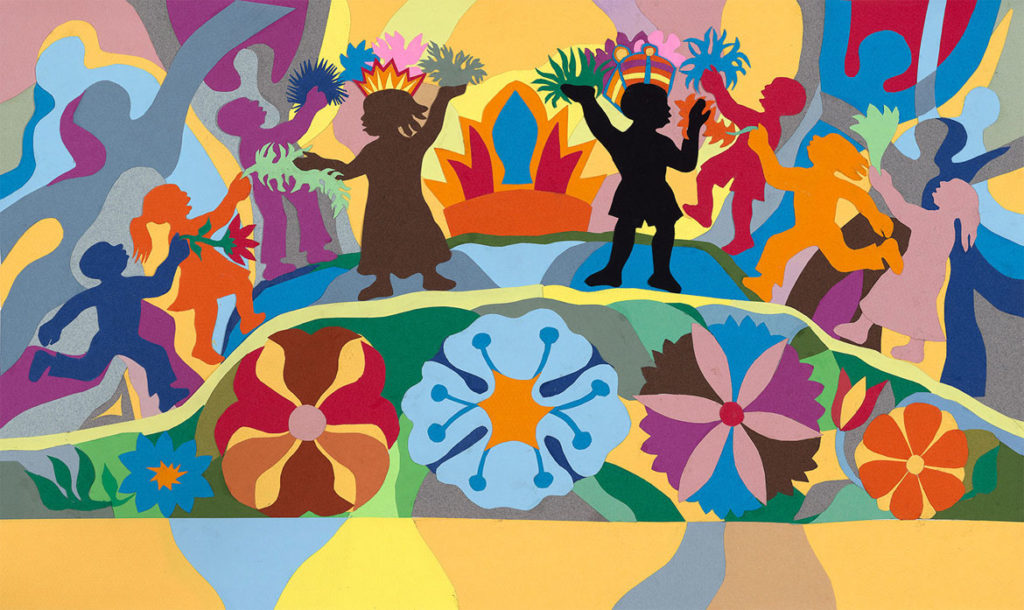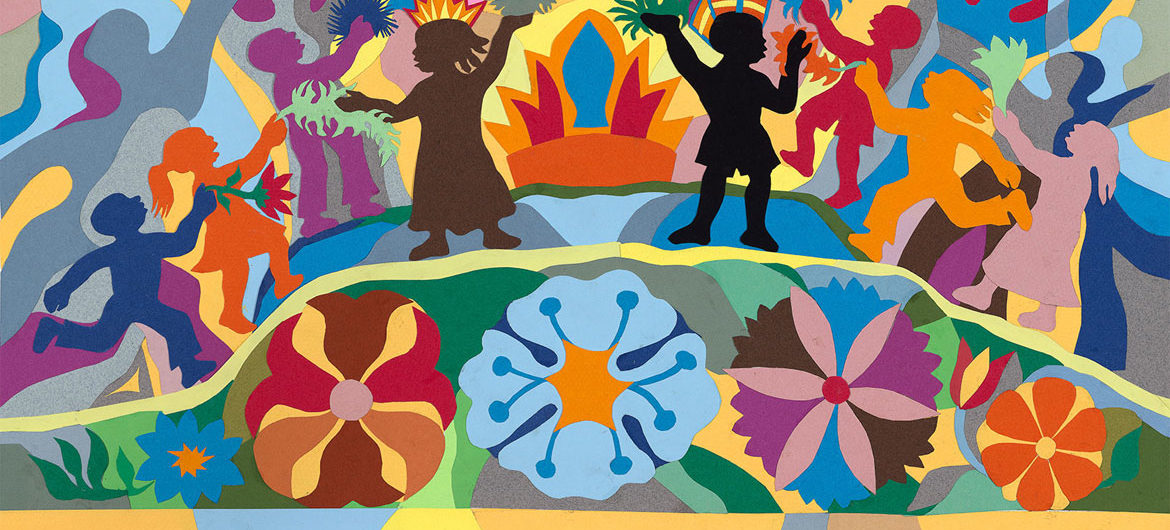In the 1950s, when Ashley Bryan first came by boat to summer on Maine’s Great Cranberry Island, he recalled, “I had my boxes and things, someone reached for it and passed it to another and then to another till it reached the dock at the top. And I said, ‘Oh my, it’s a chain of hands, just as it is at home.’ So I was immediately at home.”
By home, the celebrated African American children’s book author and illustrator was thinking of the Bronx, New York, where he grew up during the Depression. Born in 1923, he was the second of six children of immigrant parents from Antigua who taught him “never let anything stop you.” They lived in tenement apartments “in which we knew everyone on the four or five stories. And everyone looked after everyone.”
“That’s why I knew I’d always be coming back,” Bryan told me in 2012 of the Cranberry Isles. “Because it’s like the tenement house. Everyone had this outreach to help anyone in need.”
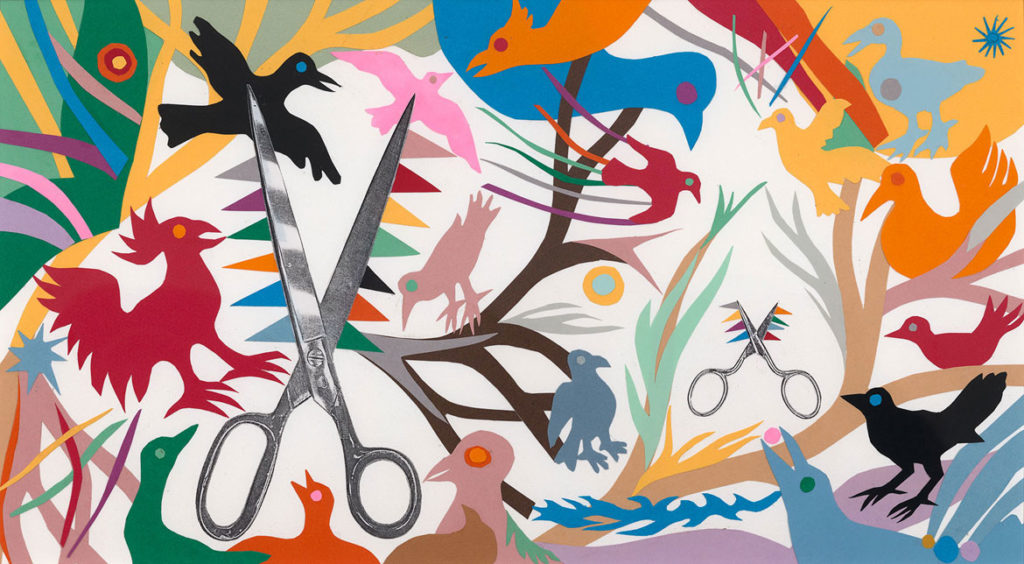
That spirit runs through Bryan’s children’s books—from traditional African tales to his own rhyming verse to collections of African American poetry and spirituals—which earned him the American Library Association’s Coretta Scott King-Virginia Hamilton Award for Lifetime Achievement in 2012. He is among the first—and sometimes credited with being the first—African Americans to both write and illustrate a published children’s book. And his picture books of African tales were among the first published for children in the United States. His 2016 book “Freedom Over Me: Eleven Slaves, Their Lives and Dreams Brought to Life by Ashley Bryan,” won a Newbery Honor and Coretta Scott King Honors.
“It means a lot to me to open up aspects of black culture to people,” Bryan has said. “I hope that my work with the African tales will be … like a bridge reaching across distances of time and space.”
“Painter and Poet: the Art of Ashley Bryan,” an exhibition of his art, is on view at the Portland Museum of Art in Maine from Aug. 3 to Nov. 25. Originally organized by the Eric Carle Museum of Picture Book Art in Amherst, Massachusetts, the show ranges from sketches he drew while serving in World War II to his earliest books of African folktales to large puppets he has made from things that washed ashore on the Little Cranberry Island, where he still lives.
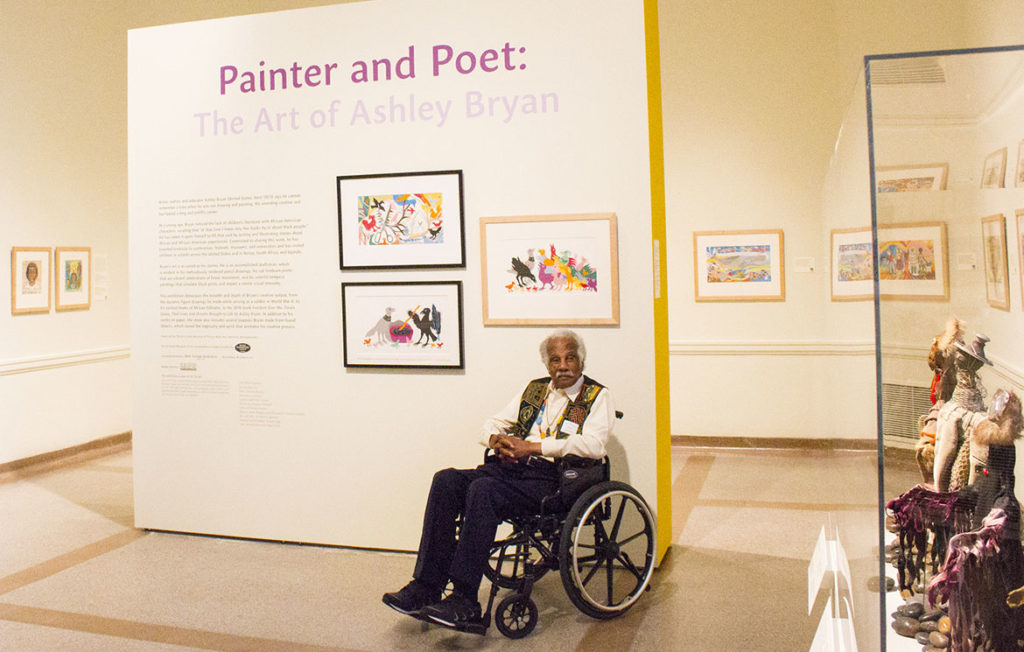
After graduating high school in 1940, Bryan studied for two years at Cooper Union, “the only black in my class,” after another New York art school turned him down saying “It would be a waste to give a scholarship to a colored person.” Drafted into a World War II Army stevedores unit in 1943, he landed on the beaches of Normandy, France, two days after the D-Day invasion to help unload ships. “I kept my drawing materials in my gas mask,” Bryan told me in 2012. “I would draw any opportunity I got. It was my way of survival.”
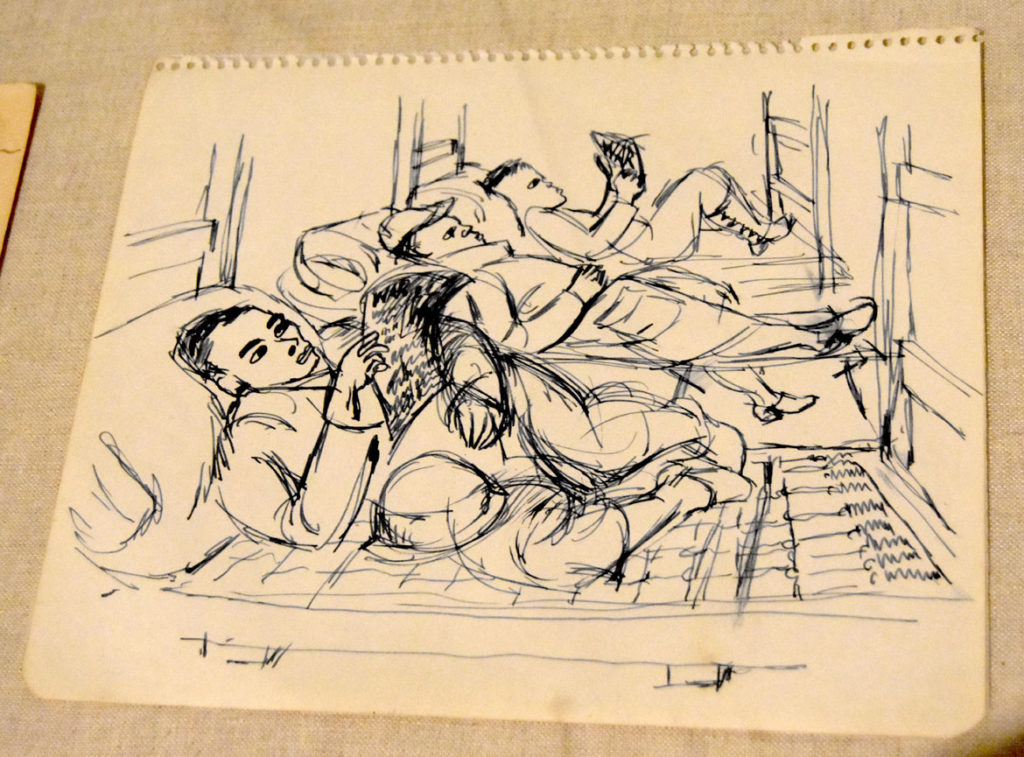
“It’s a thing that you suppress,” he said of the war. Seeking “to understand why man chooses war,” when he returned home to New York after his discharge, he studied philosophy at Columbia University. And he attended Skowhegan School of Art on scholarship during its first summer in 1946. “That experience, coming from the Second World War, coming from New York City, and entering the landscape of Lake Wesserunsett, and painting outdoors was so invigorating for me,” he said. “So from then on I returned [to Maine] in summers.”
Bryan taught at various schools around New York and beginning in 1974 at Dartmouth College in New Hampshire. He’d long illustrated books to give to family and friends, but was unable to interest publishers until editor Jean Karl at Atheneum sought him out in 1962. For “Moon, For What Do You Wait?” (1967), the first of many books they produced together, Bryan carved folksy linocuts of birds and gardens and mountains to go with poems by the Indian author Rabindranath Tagore.
“She kept after me through all the years,” Bryan said of Karl, “wanting to know, ‘What are you working on for me?’”
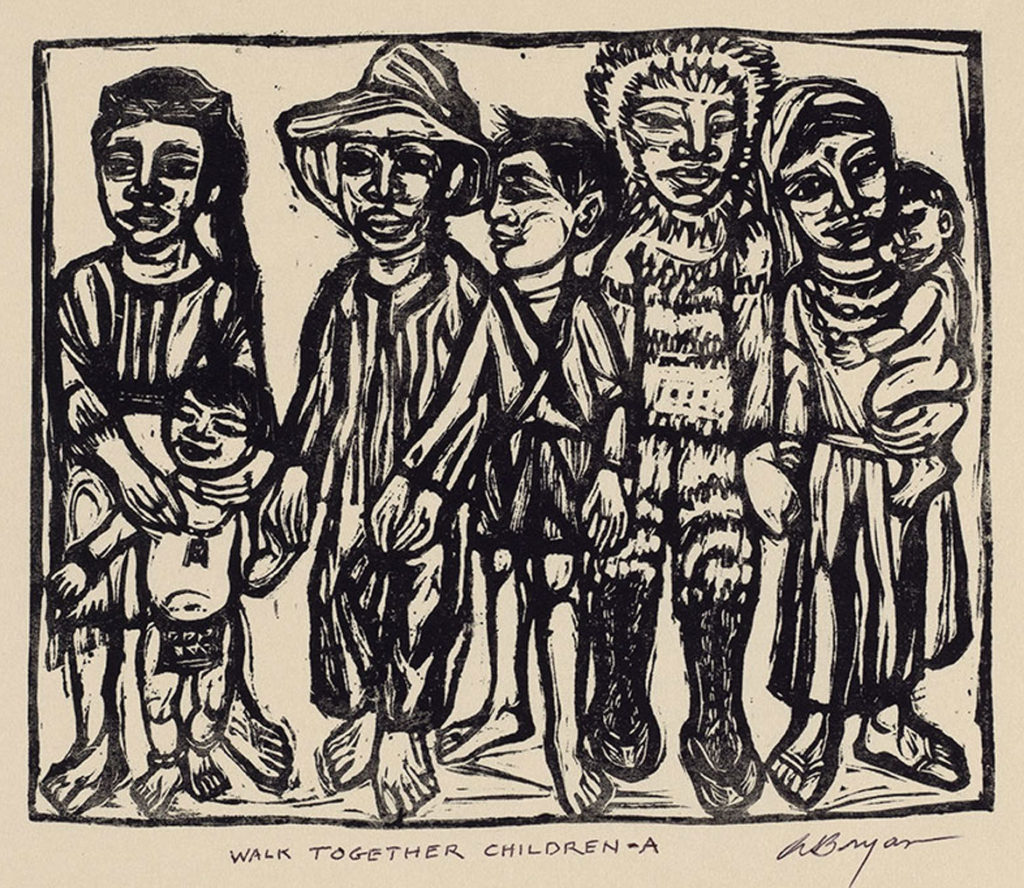
Bryan varies his style, tapping into his knowledge of art history as well as his experiences traveling to England, Italy, Spain, Germany, Yugoslavia, Greece, India, Kenya, Uganda. The result is medieval linocuts for collections of African spirituals like “Walk Together Children” (1974), earth-toned tempera paintings inspired by African masks for 1970s African tales like “The Adventures of Aku,” bright child-like watercolors for a collection of his own verse, “Sing to the Sun” (1993), cut-paper collages for the Zambian folk tale “Beautiful Blackbird” (2003).
His books speak of youthful exuberance and shenanigans, of dance and play. They’re soothing and marvel at creation. Their foundation is a desire to honor and teach African and African American traditions in a context of respect for all cultures and traditions. “The United States means people from all over the world,” he said. “They’ve offered the best of their backgrounds into the American culture, which has made the American culture unique.”
When Bryan retired from Dartmouth in 1988, he settled in Islesford on Little Cranberry Island. He decorated his home with his paintings, stained glass he’s made from sea glass, puppets he’s assembled from scraps and driftwood and shells he’s found on the beach. The Ashley Bryan Center’s Storyteller Pavilion was completed on part of his property there last year to publicly showcase his art, including the sea glass windows.
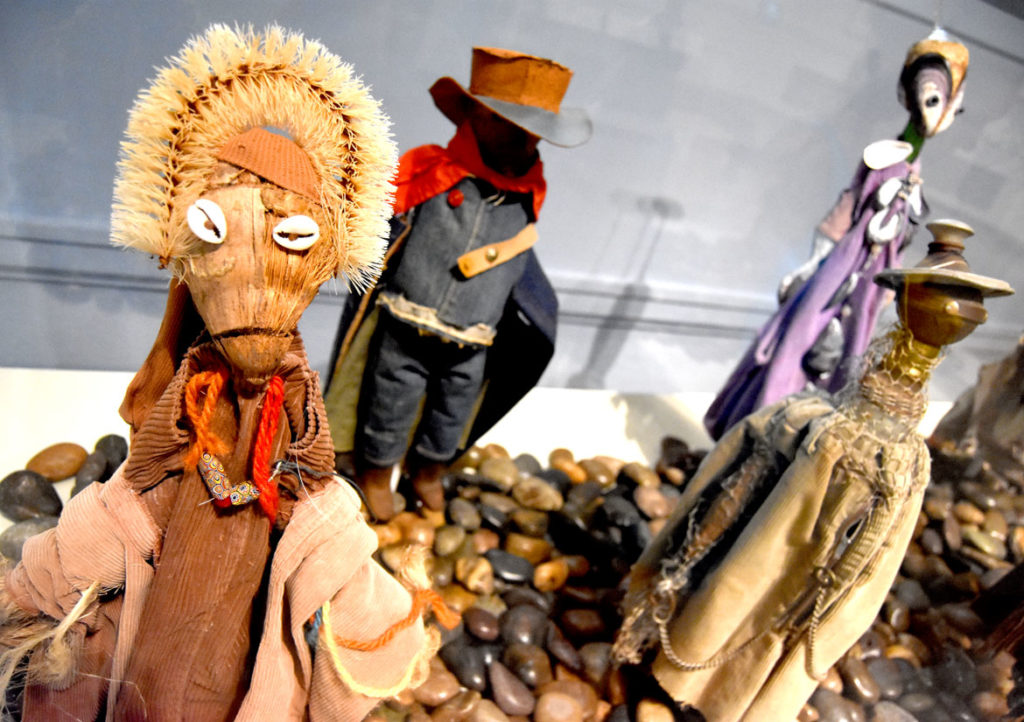
Bryan has become such a fixture of the island that in March 2012, Town Meeting voted to rename the Islesford elementary school after him. He didn’t know it was on the agenda and it came as a surprise when someone called him that day with the news. “I was in tears I was so moved by that,” Bryan told me not long after. “They were having lunch at the time so I went and thanked them. The children immediately took down the Islesford School sign and painted their own on a white board with red letters: Ashley Bryan School.”
Help Wonderland keep producing our great coverage of local arts, cultures and activisms (and our great festivals) by contributing to Wonderland on Patreon. And sign up for our free, weekly newsletter so that you don’t miss any of our reporting.
